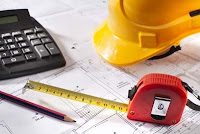RULES FOR MEASUREMENT
RULES FOR MEASUREMENT
The rules for measurement of each item are invariably described in IS-
1200. However some of the general rules are listed below.
 |
| Rules |
1. Measurement shall be made for finished item of work and description of each item shall include materials, transport, labour, fabrication tools and plant and all types of overheads for finishing the work in required shape, size and specification.
2. In booking, the order shall be in sequence of length, breadth and height or thickness.
3. All works shall be measured subject to the following tolerances. i) Linear measurement shall be measured to the nearest 0.01m. ii) Areas shall be measured to the nearest 0.01 sq.m
iii) Cubic contents shall be worked-out to the nearest 0.01 cum
4.Same type of work under different conditions and nature shall be measured separately under separate items.
5.The bill of quantities shall fully describe the materials, proportions, workmanships and accurately represent the work to be executed.
6.In case of masonary (stone or brick) or structural concrete, the categories shall be measured separately and the heights shall be described:
a) from foundation to plinth level
b) from plinth level to First floor level
c) from Fist floor to Second floor level and so on.
METHODS OF TAKING OUT QUANTITIES:
The quantities like earth work, foundation concrete, brickwork in plinth and super structure etc., canbe workout by any of following two methods:
a) Long wall - short wall method b) Centre line method.
c) Partly centre line and short wall method.
a) Long wall-short wall method:
In this method, the wall along the length of room is considered to be long wall while the wall perpendicular to long wall is said to be short wall. To get the
length of long wall or short wall, calculate first the centre line lengths of individual walls. Then the length of long wall, (out to out) may be calculated after adding half breadth at each end to its centre line length. Thus the length of short wall measured into in and may be found by deducting half breadth from its centre line length at each end. The length of long wall usually decreases from earth work to brick work in super structure while the short wall increases. These lengths are multiplied by breadth and depth to get quantities.
b) Centre line method:
This method is suitable for walls of similar cross sections. Here the total centre line length is multiplied by breadth and depth of respective item to get the total quantity at a time. When cross walls or partitions or verandah walls join with mainall, the centre line length gets reduced by half of breadth for each junction. such junction or joints are studied caefully while calculating total centre line length.The estimates prepared by this method are most accurate and quick.
c) Partly centre line and partly cross wall method:
This method is adopted when external (i.e., alround the building) wall is of one thickness and the internal walls having different thicknesses. In such cases, centre line method is applied to external walls and long wall-short wall method is used to internal walls. This method suits for different thicknesses walls and diffeent level of foundations. Because of this reason, all Engineering departments are practicing this method.




No comments